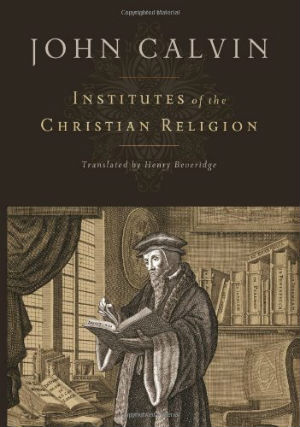By Neil Earle

“Pastors are creepy…they’re out to proselytize people to become right-wing Republicans, and they hate homosexuals, and definitely wouldn’t know who the Smiths and the Banshees (musical groups from the 1980s) are.”
The speaker was a young gym instructor who had just been astonished to learn that the young man she had been showing off the new equipment too was in fact one of those creepy pastors. She gave him her honest reaction. Dan Kimball tells this story to introduce his book They Like Jesus But Not The Church.
Now there have been many studies done about how the younger generation – especially the twenty-somethings – are not showing up in church, that they feel very alienated from the church and its practices. But Dan Kimball puts an edge on it. “Christians are now the foreigners in a post-Christian culture and we have got to wake up to this reality.”

Dan knows that Christians are perceived as scary, angry and judgmental, but he knows better. Most, he says, are wonderful and dear people who are trying hard to live as Christ would want them to. One hundred million people go to church by some counts – that’s a pretty big minority and they range from computer geeks to faith-healing charismatics. So it isn’t kosher to tar everyone with the same brush. And Dan knows what I have learned as a pastor in the suburbs – twenty-somethings see the church as controlling and domineering, fostering “organized religion” (in spite of how disorganized some of us sometimes are). The institutional church stifles their own spiritual interests because – here’s the surprise for most folks – young people have deep spiritual interests and they are trying to find them fulfilled outside the church.
Dan knows a rockabilly drummer who dropped out of a “controlling” church but who uses the Lord’s Prayer as his spiritual connection nearly every day. He meets young people in coffee shops who study the Jewish semi-occult Kaballah. He knows what I learned teaching twenty-somethings in a fairly large community college down the road:
Dan summarizes quite nicely that the church appearing out of step is nothing new. He shows how in the first Christian centuries, believers were often misunderstood as being cannibals (because they took the body and blood of their Lord), arsonists (they believed the old world would end in fire) and incestuous (they called each other brother and sister). They were also considered atheists because they rejected the old Roman gods – Jupiter, Saturn and the like.
Right away that should encourage us about our predicament today – to be out of step with society is nothing new for the church.
Okay, my time is running out so I want to let you in on a dirty secret. It is this: Not all Christians or pastors are that bullet proof when it comes to their faith. We all have doubts, just like the twelve disciples (Matthew 28:17). We all feel like throwing in the towel at certain periods in our lives. Like Paul (2 Corinthians 8:11). You see we serve an invisible God and sometimes we miss him in the smoke and dust of the day to day or the extreme crises that afflict congregations. So what keeps us coming back? What is there about the church that keeps us hanging in there?
Well, first of all, the church was Jesus’ idea. “I will build my church” (Matthew 16:18). As much as we like to portray Jesus as a Lone Guru roaming around Palestine he did get substantial financial support from other people – twelve men and precious loyal women (Luke 8:1-3). Jesus, in other words, was a social being – not a loner. Christian through the ages have always known there is no way to fulfill our spiritual selves in isolation. People need people. Christians need other Christians to sometimes speak just the right words of encouragement when the going gets tough (Matthew 18:20).
In the 1990s our church was being torn apart by internal feuds and doctrinal disputes. What helped me and my congregation get through this were the words of John Calvin, a Christian writer and teacher who meditated a lot on the church and its purposes. That’s one great thing about the organized Christian church – it has a long history so you can bet that just about every question we ask has been raised and answered by someone in our past. The plain truth is that most of the Christian past has been positive and affirming when you get past the “usual suspects” of the Inquisition and Religious Wars. I once got an atheist to rethink his prejudices against the church by reminding him that just now, while we are arguing, the Salvation Army has fed 1000 people, the Methodist Hospital down the road had taken in 8-10 more people and “Nurses for Jesus” in Glendora were probably stuffing their cars with another food run for the homeless.
Okay, back to the subject – What did Calvin say that got through to me and my people?
Calvin wrote in the 1530s in Europe. Wars between Protestants and Catholics (see, people fight over things they really hold dear) was raging. Extremism and persecution was in the air. In Spain the rope and the rack awaited would-be Reformers while radical Protestants terrorized the city of Munster in Germany for over a year (1534-1535).
Whatever else the 1530s were, they were not the apex of Christian unity and toleration – far from it! There were many at the time who thought – If this is the church, I want nothing of it!

In the midst of this horrific fanaticism and lethal bigotry, in Basel, Switzerland, a brilliant young French lawyer who had been recently converted set down to write a treatise. According to some his ideas would distil the essence of the whole upheaval we call Reformation. And get this, John Calvin’s Institutes of the Christian Religion, was first issued in 1536 when the young scholar was only twenty-six years old.
Yes, he was a twenty-something.
His words surged with unmistakable devotion for the Faith and what it meant to him. He wrote: “It is by the faith in the Gospel that Christ becomes ours and we are made partakers of salvation and eternal blessedness brought by him.” This all Christians can agree on – but is that enough? Can we be Lone Ranger Christians and thrive in the faith? No, said Calvin, faith has a social dimension – we are to learn faith from other godly people (Hebrews 13:7) and they are usually found in church.
Calvin knew we needed “outward helps to beget and increase faith within us and advance to its goal.” God, he said, “has also added these aids that he may provide for our weakness.”
For Calvin, the most important of these outward aids was the organized Church’s teaching ministry and Spirit-approved authority to carry out Baptism and the communal spiritual meal called the Lord’s Supper: “Shut up as we are in the prison house of the flesh, we have not yet attained angelic rank. God, therefore, in his wonderful providence accommodating himself to our capacity, has prescribed a way for us, though still far off, to draw near to him.”
We eat the bread, we drink the wine. And in the company of others. In such ways God gives us physical assurances and reminders of his presence. Or so Christians believe.
For Calvin and others in that dark time the visible church was also part of an invisible body of believers. Through baptism, communion, laying on of hands for the sick, decent Christian burial, christening of infants, good works and poor relief, the visible church becomes the symbolic mother of the faithful (Galatians 4:26). It is the church, Calvin wrote, “into whose bosom God is pleased to gather his sons, that they may be guided by her motherly care until they nature and at last reach the goal of faith. ‘For whatever God has joined together, it is not lawful to put asunder’ (Mark 10:9), so that, for those to whom He is Father the Church may also be Mother…as Paul testifies when he teaches that we are the children of the new and heavenly Jerusalem (Galatians 4:26).”
Calvin’s vision of the church was thus majestic, elevated and intimate. It encouraged believers to look beyond the immediate present which soon fades, into something bigger. “The Church refers not only to the visible church but also to all God’s elect, in whose numbers are also included the dead.” Churches used to be built around graveyards symbolizing the connection between the generations. “In this way our salvation rests upon sure and firm supports, so that, even if the whole fabric of the world were overthrown, the church could neither totter or fall. First, it stands by God’s election, and cannot waver or fall any more than his eternal providence can. Secondly, it has been joined to the steadfastness of Christ who will [not] allow his believers to be estranged from him…Besides, we are certain that while we remain within the bosom of the church the truth will always abide within us. ‘God will abide in the midst of Jerusalem forever, that it may never be moved’” (Psalm 46:5).
This rings true in my life. I remember being shaken a bit by the pervasive skepticism of the 1960s when Bishops questioned church teachings in books such as Honest to God and Time magazine asked in bright red letters “Is God Dead?” It didn’t look good for the church back then. But the church survived when the hippie communes of that era folded. It seems to have staying power, this invisible organism called the church. Calvin was convinced that “there is no other way to enter into this life unless this mother conceives us in her womb, give us birth, nourish us at her breast, and lastly, unless she keeps us under her care and guidance.”
Calvin had no doubt that people needed the church: “Many are led either by pride, dislike or rivalry to the conviction that they can profit enough from private reading and meditation; hence they despise public assemblies and deem preaching superfluous…But I say we must not thoughtlessly forsake the church because of any petty dissensions. For in it alone is kept safe and uncorrupted that doctrine in which piety stands sound.”
What did he mean by that?
“By baptism we are initiated into faith in him; by partaking in the Lord’s Supper we attest our unity in true doctrine and love; and for the preaching of the Word the ministry instituted by Christ is preserved.”
These are powerful reasons for remaining in fellowship with the body of Christ and its local manifestations. But I’m a pastor, I guess I’m prejudiced. Think about this though – we can’t baptize ourselves and we can’t ordain ourselves. We can’t marry each other (usually) or bury each other. Faith has a social dimension. Calvin knew that! Churches at their best know this. Most of them are committed to supportive fellowship and a life of good works.
Calvin was later woefully misinterpreted by his successors. But he actually counseled toleration on non-essentials: “For not all the articles of true doctrine are of the same sort. Here are the apostle’s words; ‘Let us therefore be of the same mind; and if you are differently minded in anything, God shall reveal this also to you”(Philippians 3:15).
Though his followers would weave some of his other ideas into a sometimes intolerant system known as “Calvinism,” to the young twenty-something Calvin of the Institutes, and to most non-creepy pastors today, the Church, in God’s wonderful providence, was founded as an incubator of infant faith and to thus bring it to maturity. It still is.
(Neil Earle is a pastor and historian based in suburban Los Angeles who teaches church history online.)